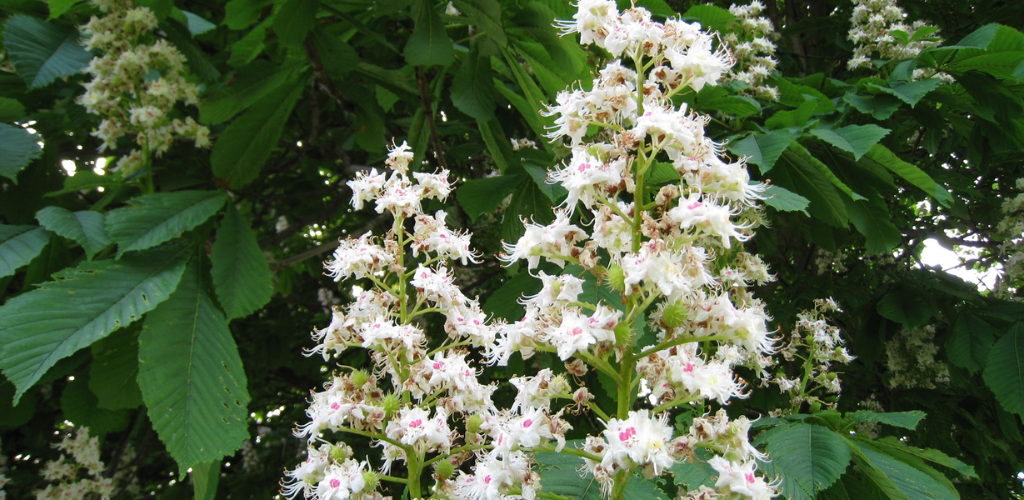As soon as the chestnuts bloom
Prepare soothing ablutions
Perhaps we had the impression that the weather had turned the heating up to full blast when it was already scorching hot at the beginning of April. In my opinion, the high temperatures put stress on the plants in particular, as they began to bloom faster than usual. And soon it will also be the case with horse chestnuts (Aesculus hippocastanum). It is a true splendor that we can then marvel at. Despite all its beauty, we can also ask about its value for herbal medicine. The flowers of horse chestnuts – not to be confused with chestnuts (Castanea sativa) – contain useful ingredients such as esculin, glycosides, tannins and saponins. So they are not only interesting for the bees who collect the nectar from them, but we can also use the flowers. These graceful growths can be of use to us when we are trying to relieve some ailments related to the blood vessels. Specifically, I mean vein problems, varicose veins, hemorrhoids and ulcers on the lower legs. In addition to all the medical measures that are recommended by competent medical therapies, it is not uncommon for a home remedy to be helpful as an accompanying supplement that has been tried and tested for generations.
Pour on flowers
Scald approx. 30 g of plucked and well-dried horse chestnut flowers with 1 liter of boiling water. Cover and let it steep for 20 minutes, then strain and filter additionally. At an acceptable temperature, use it to wash the areas of the body affected by vein problems, painful varicose veins, leg ulcers or hemorrhoids. This can help to reduce some of the discomfort associated with these conditions. www.kraeuterpfarrer.at

Chestnuts © Watercolor by Adolf Blaim, Kräuterpfarrer-Zentrum Karlstein/Thaya
